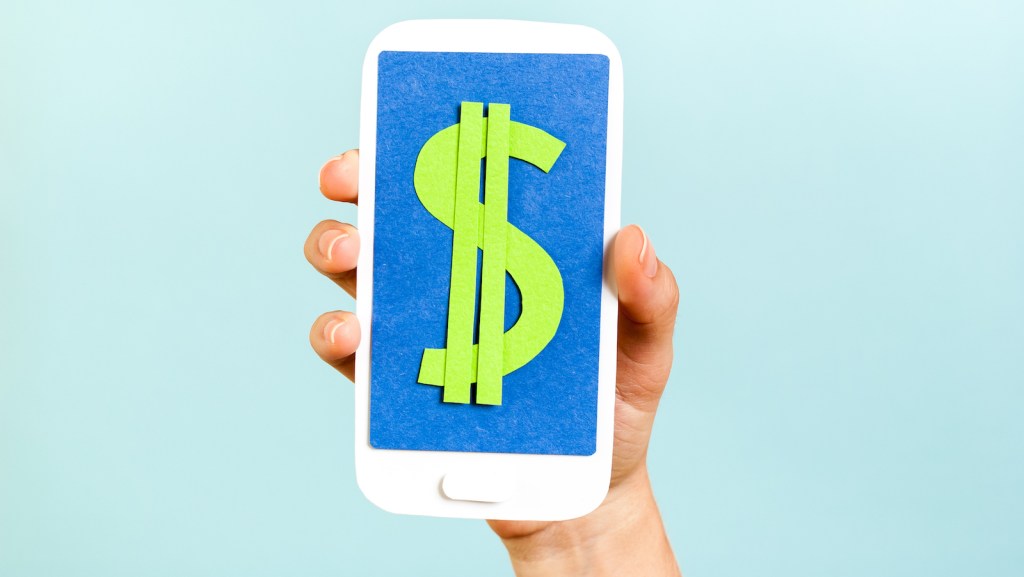Table of Contents
** Minutes
The simple framework for building a brand that lasts starts with a brand promise
This is part two in our interview series on the secrets to finding DTC brand success. Read part one here.

Taylor Holiday, Managing Partner of Common Thread Collective
“Brand marketing” is often seen as hand-wavey hocus pocus, while performance marketing is the only true way to measure the ROI of marketing dollars.
The thinking goes: You can pay for brand impressions, but getting your products in front of buyers — and converting them to customers — is the only true measure of ecommerce success.
“Brand” is useful for luxury products, but for the rest of the online selling universe, selling products through AdWords and Facebook is the path to profitability.
But what if we told you that the most important ecommerce KPI also doubles as your #1 brand marketing metric? What if we said that Customer Lifetime Value (LTV) is your brand?
We sat down with Taylor Holiday, managing partner of Common Thread Collective, and owner of 4×400, to get his unique take.
We discussed, among other things:
- How direct-to-consumer companies should measure brand
- The differences between selling a product and running a brand
- How to identify cost savings in the right places (hint: it’s not related to your marketing budget)
Recognizing that brand = LTV
Running a DTC ad agency, Taylor Holiday isn’t only focused on what you traditionally may associate with performance marketing. He views success as not just when people click your ad and become a customer, but when customers return to purchase again.
“To me brand is very simply LTV — to be a customer for life. Brand and performance marketing are two sides of the same coin,” Taylor said.
“LTV is all about the ability to measure your brand’s existence. If no one comes back to buy your product again, you’ve either failed to deliver on the brand experience or people don’t value that experience.”
Taylor Holiday, Managing Partner of Common Thread Collective
Even if his agency Common Thread Collective creates a great campaign, the ecommerce business won’t scale if their customers don’t come back.
Bill Bernbach, renowned american advertising creative director from the 1960s, made famous the concept of great advertising reveals bad product faster. Doing paid advertising for great brands is much easier and cheaper when people show up independent of your direct payment for them, as you’re great at giving them the experience they want.
Once you’ve convinced people to try the product, will it meet their expectations? The real measurement is customer loyalty. Once you release your next set of products, will those customers that you’ve acquired come back and buy again?
Can awesome products have terrible brands? Yes. Can terrible products have customers for life? Yes. Think about cable companies with recurring billing models that have terrible customer service, very little brand affinity, and virtually no competitors.
Of course, the best brands are the ones that stand out in a competitive space, because they’ve had to create a distinctive set of attributes to have a relationship with the customer.
The simple framework for building a brand that lasts starts with a brand promise
Many companies will be in existence for two years before they ask, “How do we become a brand?” Or, in other words, “How do we get people to buy more than one product from us?” Ideally, this should be figured out before you launch.
Taylor has a simple — but brilliant — framework for building brands:
- Identify a presumed brand promise.
- Make a hypothesis about which products deliver on that promise.
- Once you get data, the branding experience is the product that best delivers on the brand promise — which also satisfies “performance marketing” goals.
For example, his skincare brand Bambu Earth was launched on the premise that the core product would make customers feel great about themselves, which would then manifest itself in repeat purchases.
They assumed people would buy the flagship product again. But when the brand promise was delivered, they went back and ordered different products. This taught Taylor and team that the brand was really about trust to solve a set of related problems, not just one.
The customer journey was predicated on trust with the brand, not feeling good about one product. They were wrong, and adjusted accordingly.
Why you need to start with a hypothesis
Taylor recalled a meeting for a major retailer with a collection of buyers, who were really smart, world-class design and brand professionals discussing a product concept they’re in the process of raising money for.
“They had a 60-page incredibly beautiful deck that walks through the mission of the company, their market position, the value proposition, and what their products are going to look like visually — a “brand” deck,” he said. “But what was fundamentally missing is the answer to what the actual customer experience is.”
What is the first product a customer is going to order? What is the margin on that order? What is the repurchase rate? How successful are you going to be at getting them to repurchase? How many times are they going to purchase within nine months? And where is the cash flow you need to support that?
This top-notch team couldn’t answer these questions. They did not have a proper customer acquisition model thought out, including the overall ROI and specific KPIs.
“It’s so critically important to understand what your customer acquisition costs will be and how much you’re willing to spend. If an advertising partner tells you, ‘I will create the ad that will work for you, they’re selling snake oil,’” said Taylor. “Rather than try to guess about being right, we’ve learned how to learn really fast. You want to have hypotheses formed on the best available information.”
LTV > click through rate (CTR)
If you give an advertiser the objective of generating the highest CTR possible, you’re basically giving them the license to say anything, independent of whether it’s consistent with the brand.
It’s not just about high CTR, but having a compelling ad that’s accurate. A product that can’t deliver will lead to a low customer LTV.
“Don’t worry about trying to create branding. The most success comes when there’s congruence in the entire customer journey. Meaning the promise you made in an ad is consistent with the promise they see on the website, which is consistent with the experience that they have when they actually interact with the product.”
Taylor Holiday, Managing Partner of Common Thread Collective
The strongest repeat purchase rate — and when you see the highest LTV — is when there’s consistency all the way through. To find this, you have to analyse all of your products, all consumption rates, and repeat purchase rate by SKU. Which product gets replenished the most? Which are customers not interacting with? It’s a never-ending process.
Good brands will find behaviour showing that when a customer tried one product and the brand promise was delivered on, they ordered that product again. Then, they continue using those same attention-grabbing tactics with different SKUs they launch.
Going from product to brand
One of Taylor’s brands, FC Goods, which repurposes forgotten baseball gloves into one-of-a-kind leather products, has historically been a one-product company. “What’s going to determine if we’re a product or a brand, is when we release a belt, a watch, or other products made from other materials,” Taylor said.
If customers buy them, it proves that they actually live up to their reputation and can develop customer relationships over a long time. But if they can’t invite customers further into the brand story, they just created a campaign for a single product.
FC Goods has experienced substantial growth, growing to near USD $3 million in revenue from only single purchases. But according to Taylor, that doesn’t prove they’re a brand yet. “We have dollars to work with to acquire customers, but we will not be able to scale the brand that way,” he said.
And Facebook ads are a different game now. ”It’s not that the game is harder,” Taylor explained. “Everyone thinks, ‘Facebook’s not working anymore,’ but it still has all the power of volume and distribution that it always had, but now the rules are different.”
He explained that you have to understand which customers relate to which messages and the cost-per-acquisition (CPA) for each of them. (Check out Taylor’s Black Friday marketing guide to profitability here.)
Growth marketers from companies like Nike have sophisticated systems where if you initially bought on full price, you will never see a discount. And if you bought on discount, you’ll always see the discount.
This is because people behave differently and are worth different amounts of money, so you can pay a lot more money to acquire a full-price purchaser than you should to acquire a discount purchaser. Over the lifetime of the brand, they’re far more likely to spend more money.
Optimising Facebook vs. your supply chain
Spending a bunch of money on PR or even redesigning your unboxing experience is all part of paid acquisition. Facebook ads are not the only thing that we should count towards creating outcome.
“Part of my day is spent talking to clients who just want to improve their return-on-ad spend (ROAS). To create margin and net dollars in your pocket, look at your supply chain,” Taylor said.
He recommends mapping out everywhere that you’re spending dollars between when you order more product from your manufacturer and when it shows up at a 3PL like ShipBob, to what you’re getting charged on a pick rate and what your charge is from your payment provider. It’s a long chain with sometimes difficult-to-track down exact numbers.
“There’s generally so much more waste in a typical supply chain and people don’t look at it with the same level of scrutiny that they do at the top of funnel, where it is so hard to significantly move those numbers. If I had to make an additional 10% improvement to your profit, it would probably be a safer bet to edit and optimise your supply chain.”
Taylor Holiday, Managing Partner of Common Thread Collective
People tend to hyper focus on areas of nominal change, when there are other areas of massive waste happening.
Conclusion
Data is fundamentally a story about the truth. If someone has a good brand, you can prove it. If you really want to understand if you’re a brand of choice, take a look at your repeat purchases and study how customers interact with your over time.
Gathering historical data is invaluable. Partnering with a technology-driven 3PL can provide transparent and real-time fulfilment data and analytics tools to effectively plan ahead for future orders — and maybe even help you make connections between your marketing initiatives and what products are seeing repeat purchases.
If you need an ecommerce fulfilment partner that can help meet your customers’ expectations around speedy shipping and keep them coming back for the delivery experience they want, check out ShipBob or request a quote here.
Read more from the series:






